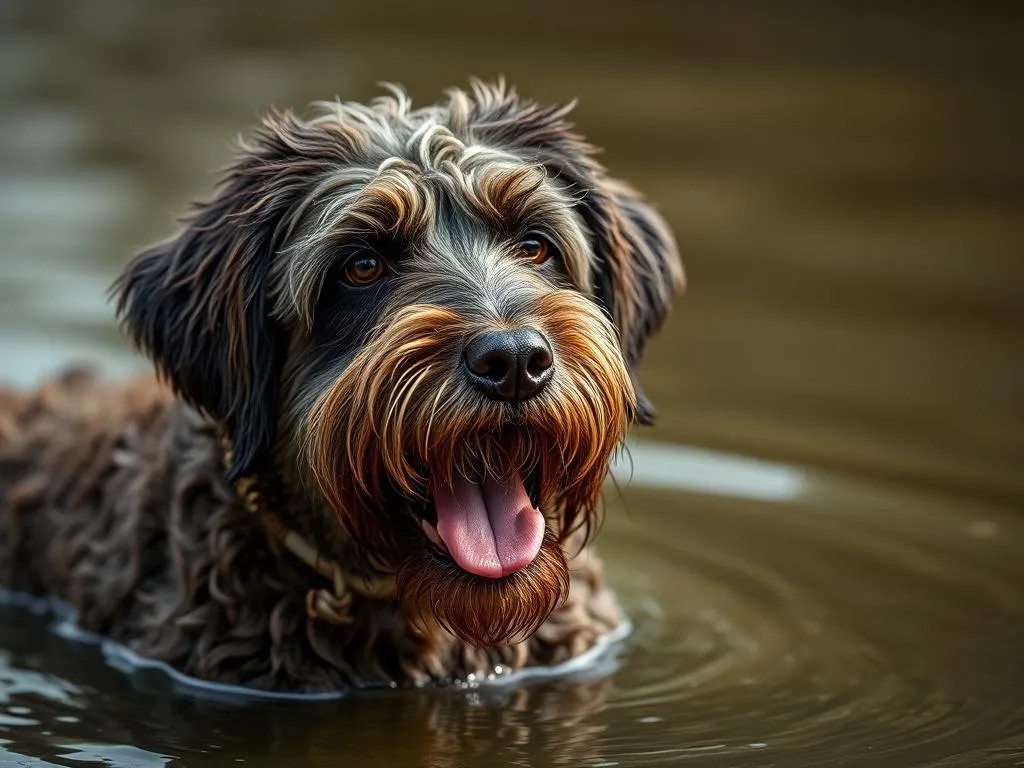
Introduction
Understanding dog breeds is crucial for potential dog owners and enthusiasts alike. Each breed comes with its own unique set of characteristics, temperament, and care requirements. One breed that stands out for its versatility and charm is the Spanish Water Dog. This breed, known for its intelligence and adaptability, has a rich history and a distinctive personality that makes it appealing to many. In this article, we will delve into the Spanish Water Dog, exploring its origins, physical traits, temperament, health care needs, training requirements, and compatibility with families.
Understanding Dog Breeds
Definition of Dog Breeds
A dog breed is a specific group of domestic dogs that share common physical traits, behaviors, and genetic backgrounds. The characteristics that define a breed include size, coat type, color, and temperament. Understanding these traits is essential for selecting the right dog for your lifestyle.
The Role of Breeds in Dog Ownership
Different dog breeds serve various purposes, from companionship to working roles. The breed significantly impacts behavior, care, and training. Some breeds may thrive in active environments, while others might prefer a quieter home. Knowing the specific needs and traits of a breed like the Spanish Water Dog can help prospective owners make informed decisions and ensure a harmonious match.
Overview of the Spanish Water Dog
History and Origin
The Spanish Water Dog has a storied past, originating from the coastal regions of Spain. Historically, these dogs were bred to assist fishermen by retrieving nets, herding livestock, and guarding property. Their exceptional swimming ability and intelligence made them invaluable to those who relied on the sea for their livelihood. Over time, the breed developed into a versatile working dog, known for its ability to adapt to various tasks, both in and out of water.
Physical Characteristics
The Spanish Water Dog is a medium-sized breed, typically weighing between 30 to 50 pounds and standing about 17 to 20 inches tall at the shoulder. One of the breed’s most distinctive features is its curly coat, which can be either wavy or tightly curled. The coat is usually dense and water-resistant, coming in various colors, including white, black, brown, and combinations thereof.
Additionally, these dogs have webbed feet, a trait that enhances their swimming capabilities. Their keen eyes and strong build contribute to their overall athletic appearance, making them not only functional but also visually appealing.
Temperament and Personality
The Spanish Water Dog is known for its intelligence, loyalty, and eagerness to please. These dogs are highly trainable and thrive on mental stimulation and physical activity. Their energy levels are high, making them playful companions who enjoy engaging in various activities, from fetching to swimming.
Socially, the Spanish Water Dog is friendly and affectionate, forming strong bonds with family members. They are generally good with children and can coexist well with other pets if properly socialized from an early age. Their protective nature also makes them excellent watchdogs, always alert to their surroundings.
Health and Care of the Spanish Water Dog
Common Health Issues
Like all breeds, the Spanish Water Dog can be prone to certain genetic health issues. Common concerns include hip dysplasia, ear infections due to their floppy ears, and certain eye conditions. Regular veterinary check-ups and screenings can help identify potential issues early.
Preventive care, including vaccinations and parasite control, is essential for maintaining the health of your dog. Responsible breeding practices also play a significant role in reducing the risk of hereditary health problems.
Grooming Needs
The grooming needs of the Spanish Water Dog are relatively high due to their unique coat. Regular washing, brushing, and occasional trimming are necessary to prevent matting and maintain coat health. Brushing at least once a week will help keep their coat in good condition.
Ear hygiene is crucial as well; regular checks and cleanings can prevent infections. Dental hygiene should also be a priority, with regular brushing to avoid dental diseases, which are common in dogs.
Nutrition and Diet
A balanced diet is vital for the overall health of the Spanish Water Dog. High-quality commercial dog food formulated for their size and activity level is recommended. Special dietary considerations may be necessary depending on age, weight, and health status. Always consult with a veterinarian to tailor a diet that meets your dog’s specific needs.
Training and Socialization
Importance of Training
Training is essential for the Spanish Water Dog due to their intelligence and eagerness to learn. Early training can help shape their behavior and establish a strong bond between the dog and the owner. Consistent, positive reinforcement techniques work best with this breed, as they respond well to praise and rewards.
Training Techniques
Using positive reinforcement, such as treats and praise, is highly effective when training a Spanish Water Dog. Start with basic commands and gradually progress to more complex tasks. Socialization is also critical; exposing your dog to various environments, people, and other animals will help them become well-rounded and confident.
Exercise Requirements
The Spanish Water Dog has high energy levels and requires regular exercise to stay healthy and happy. Daily activities such as swimming, fetching, and agility training are excellent options. Mental stimulation is equally important; engaging toys, puzzles, and training sessions can help keep your dog mentally active and prevent boredom.
Living with a Spanish Water Dog
Ideal Living Environment
The Spanish Water Dog is adaptable and can thrive in various living situations, from homes with yards to apartments, provided they receive sufficient exercise and mental stimulation. However, they do best in environments where they have space to run and play.
Family Compatibility
This breed is known for its friendly nature, making it a great choice for families. They generally interact well with children and can be protective of their loved ones. When introducing a Spanish Water Dog to other pets, early socialization is key to ensuring a smooth transition and fostering positive relationships.
Lifespan and Aging
The average lifespan of a Spanish Water Dog is around 12 to 14 years. As they age, their care requirements may change. Senior dogs might need a diet adjusted for their activity levels, regular veterinary check-ups, and modifications to exercise routines to accommodate their physical capabilities.
Conclusion
The Spanish Water Dog is a remarkable breed with a rich history, unique physical traits, and a warm temperament. Their adaptability makes them suitable for various living situations, and their intelligence and loyalty make them excellent companions. Understanding the breed’s characteristics, health needs, and training requirements is crucial for anyone considering adding a Spanish Water Dog to their family. With proper care, training, and socialization, these dogs can bring joy and companionship for many years.
Keywords and SEO Optimization
In writing this article, various related keywords have been integrated naturally throughout the text. Terms such as “dog breeds,” “dog care,” and “dog training” complement the focus on the Spanish Water Dog while ensuring a well-rounded and informative piece. By optimizing headings and subheadings for SEO, the article remains reader-friendly while targeting specific search queries related to this charming breed.









